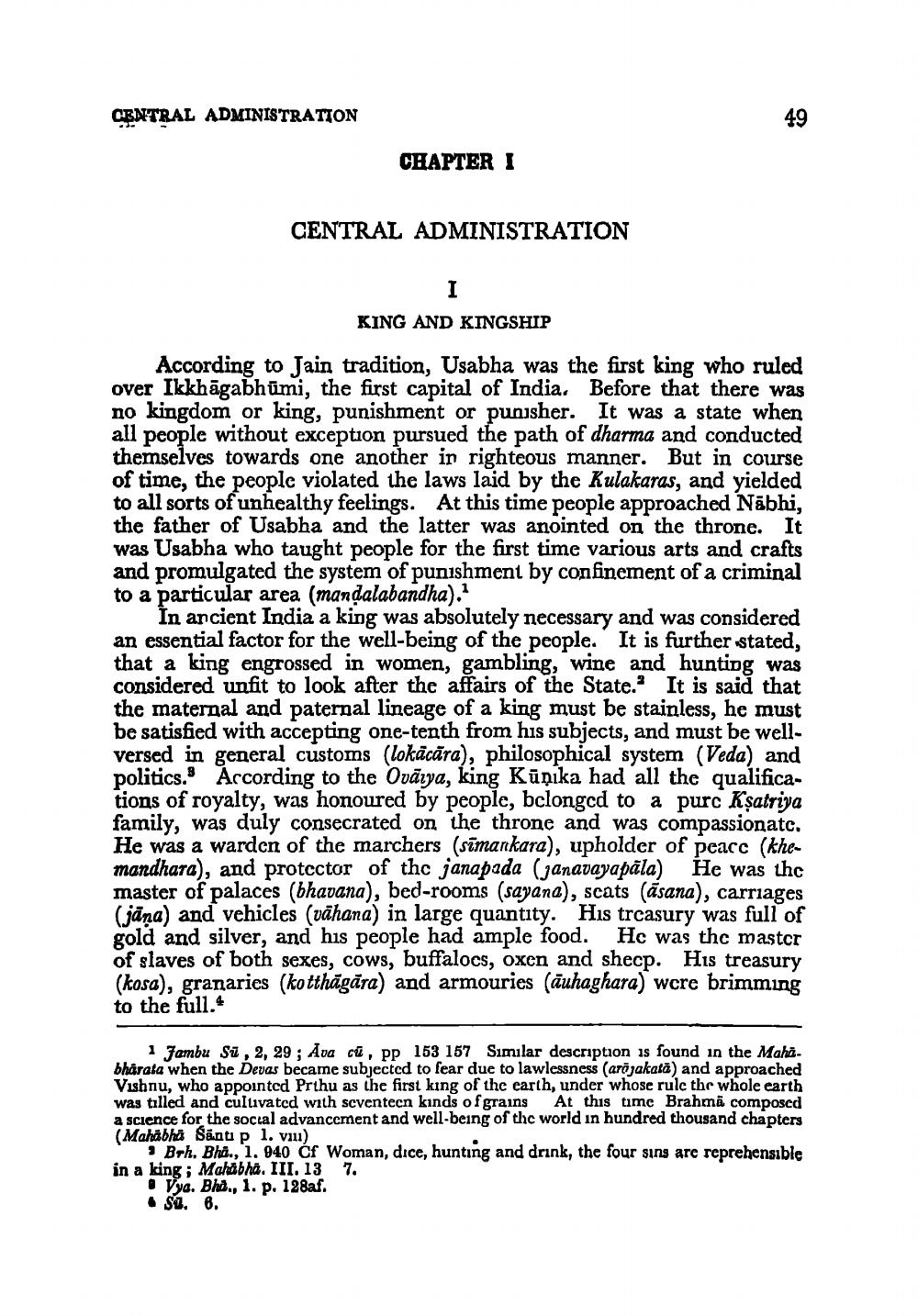________________
CENTRAL ADMINISTRATION
49
CHAPTER I
CENTRAL ADMINISTRATION
I
KING AND KINGSHIP
that a king ches to look after tace of a king musiects, and must be
According to Jain tradition, Usabha was the first king who ruled over Ikkhāgabhūmi, the first capital of India. Before that there was no kingdom or king, punishment or punisher. It was a state when all people without exception pursued the path of dharma and conducted themselves towards one another in righteous manner. But in course of time, the people violated the laws laid by the Kulakaras, and yielded to all sorts of unhealthy feelings. At this time people approached Nābhi, the father of Usabha and the latter was anointed on the throne. It was Usabha who taught people for the first time various arts and crafts and promulgated the system of punishment by confinement of a criminal to a particular area (mandalabandha).
In ancient India a king was absolutely necessary and was considered an essential factor for the well-being of the people. It is further stated, that a king engrossed in women, gambling, wine and hunting was considered unfit to look after the affairs of the State. It is said that the maternal and paternal lineage of a king must be stainless, he must be satisfied with accepting one-tenth from his subjects, and must be wellversed in general customs (lokācāra), philosophical system (Veda) and politics. According to the Ovārya, king Kūņika had all the qualifications of royalty, was honoured by people, belonged to a purc Ksatriya family, was duly consecrated on the throne and was compassionatc. He was a warden of the marchers (simankara), upholder of peace (khemandhara), and protector of thc janapada (anavayapāla) He was thc master of palaces (bhavana), bed-rooms (sayana), scats (āsana), carriages (jāna) and vehicles (vāhana) in large quantity. His trcasury was full of gold and silver, and his people had ample food. He was the master of slaves of both sexes, cows, buffalocs, oxen and shecp. His treasury (kosa), granaries (kotthāgāra) and armouries (āuhaghara) were brimming to the full.4
Jambu , 2, 29; Ava ca, pp 153 157 Similar description is found in the Mahabharata when the Devas became subjected to fear due to lawlessness (arājakatā) and approached Vishnu, who appointed Prthu as the first king of the earth, under whose rulc the whole earth was tilled and cultivated with scventeen kinds of grains At this time Brahmä сomposed a science for the social advancement and well-being of the world in hundred thousand chapters (Mahabha Santi p l. viu)
Brh. Bha., 1. 940 Cf Woman, dice, hunting and drink, the four sins are reprehensible in a king; Mahabha. III. 13 7.
• Vya. Bhi., 1. p. 128af. & ST. 6.




